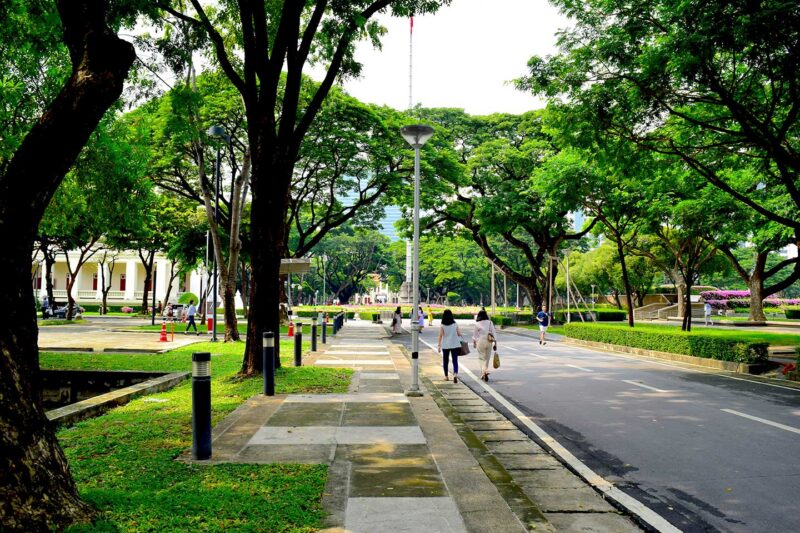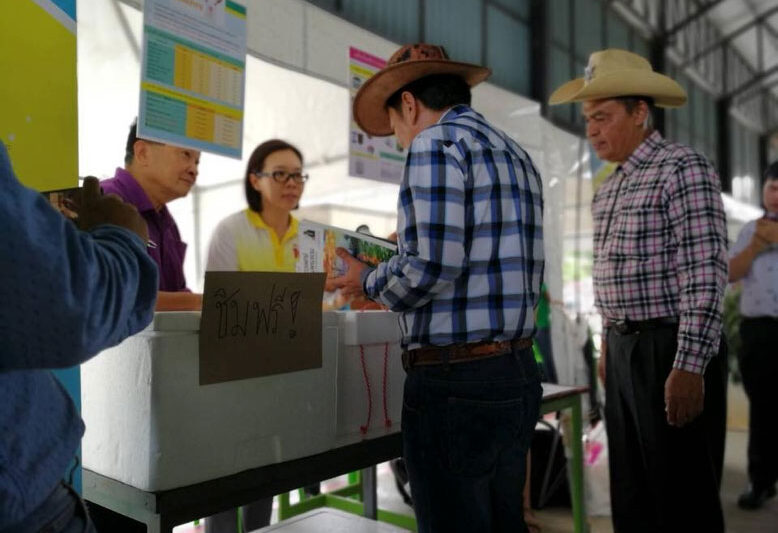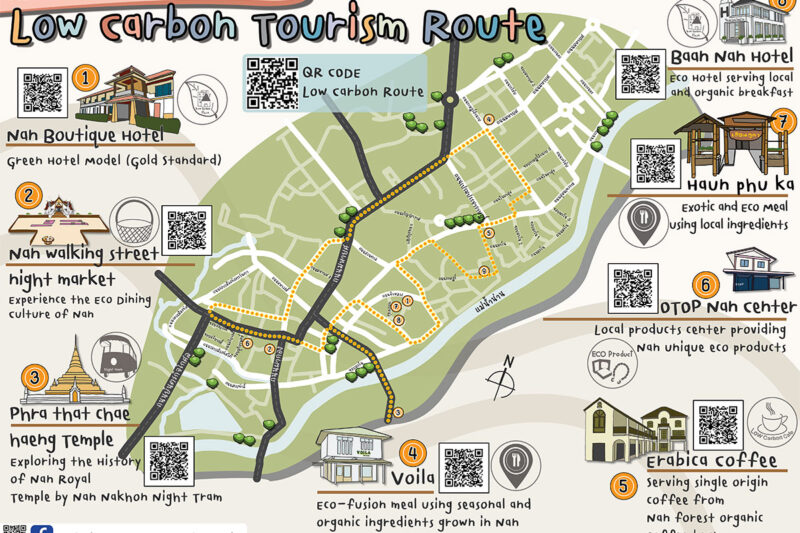Surin’s Elephant World: Architecture to Save the Biggest Land Animal
The Kui are an ethnic group in Surin who have their own dialect, unique culture and lifestyle related to elephant raising, a tradition dating back several hundred years. With natural habitats and feeding grounds shrinking as a result of urban development and economic pressure, elephant keepers or mahouts have been struggling to feed themselves and their animals.
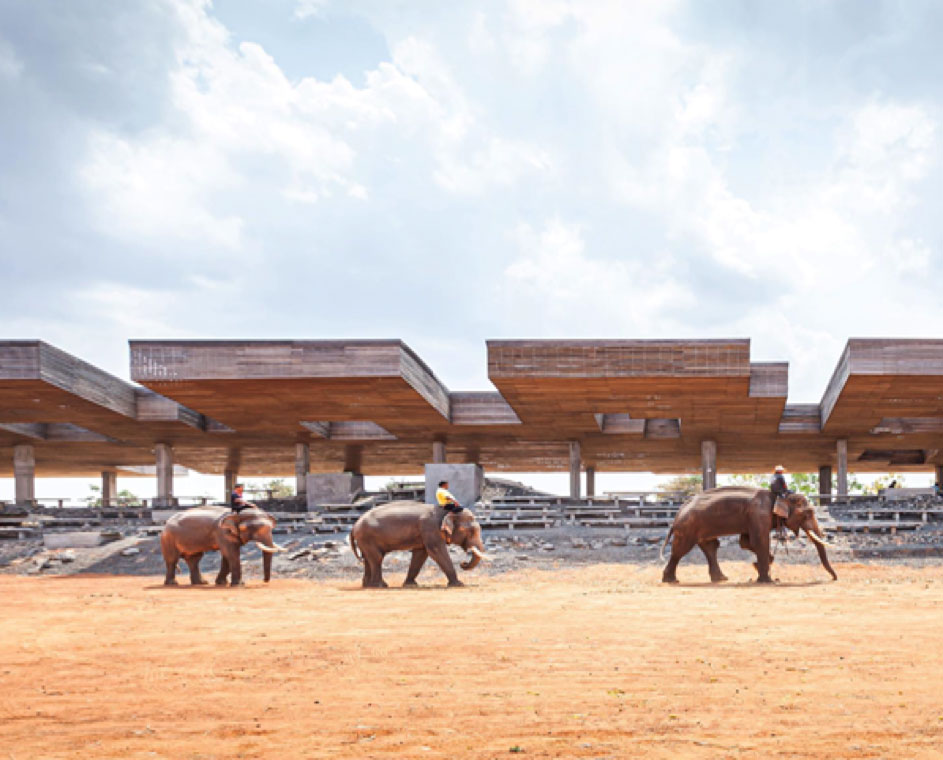
Source: Spaceshift Studio
In recent years, they have been spotted wandering the streets of Bangkok and other tourist destinations with their animals, soliciting elephant lovers for money. Such scenes have drawn criticism from foreign observers who call it cruelty to wildlife. The Thai tourism industry has also been criticized for exploiting the animals. In order to solve this problem, the Elephant World project was launched at Ban Taklang in Surin province in 2020.
As the world’s largest elephant conservation center, the project promotes itself as an integrated tourism attraction as well as a research center for elephants. Covering an area of more than 500 rai, the center is supported by the government sector and the Surin provincial administration organization.
Asst. Prof. Boonserm Premthada, an architect with Bangkok Project Studio and a lecturer at the Faculty of Architecture of Chulalongkorn University, is the head of the project. Before the project began, he led his team to Ban Taklang and talked to many local people so that the team could learn more about their needs. “Hearing the village people express their needs is crucial,” he said.
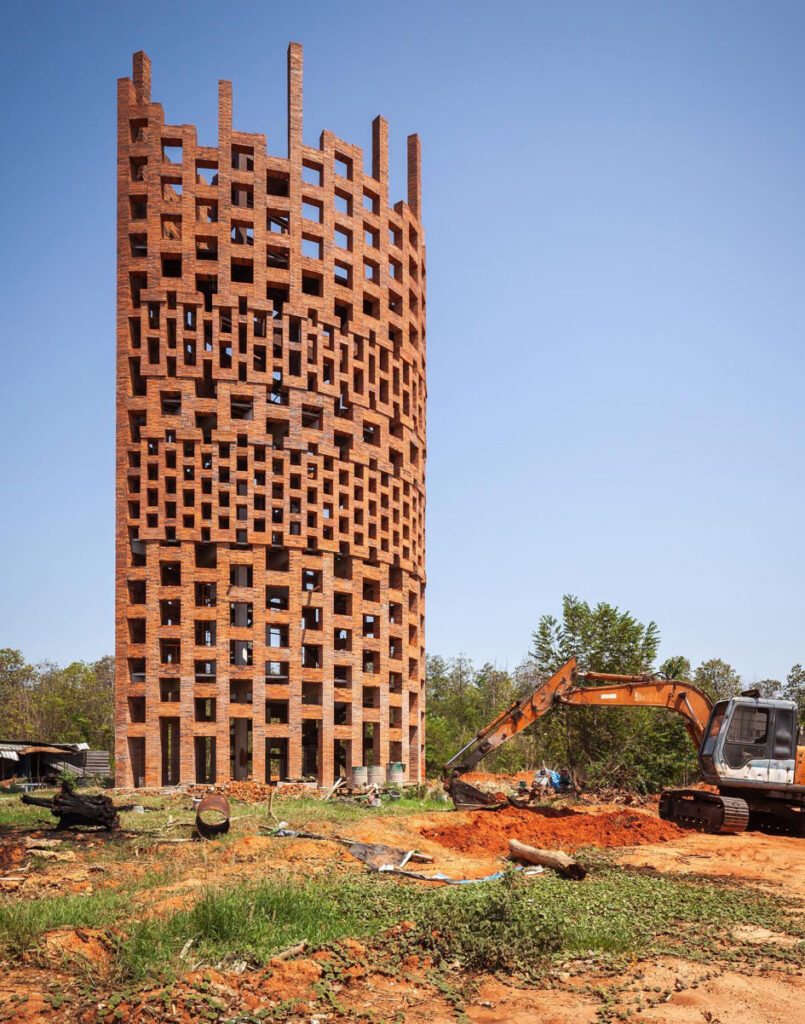
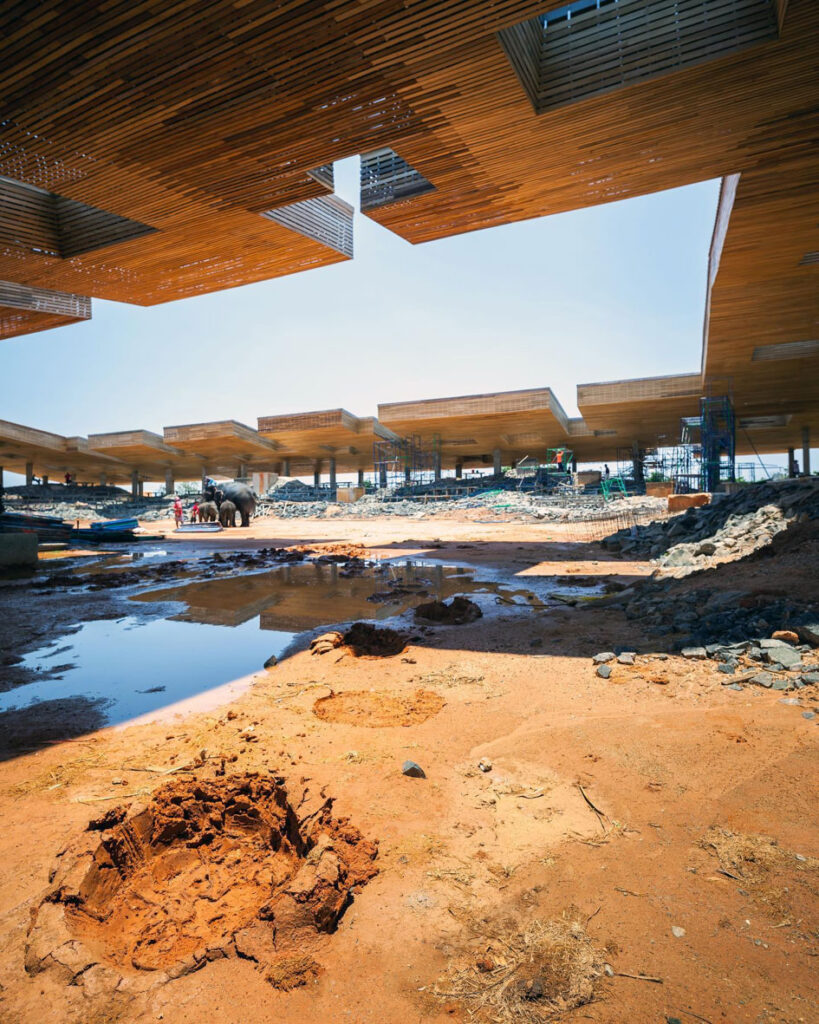
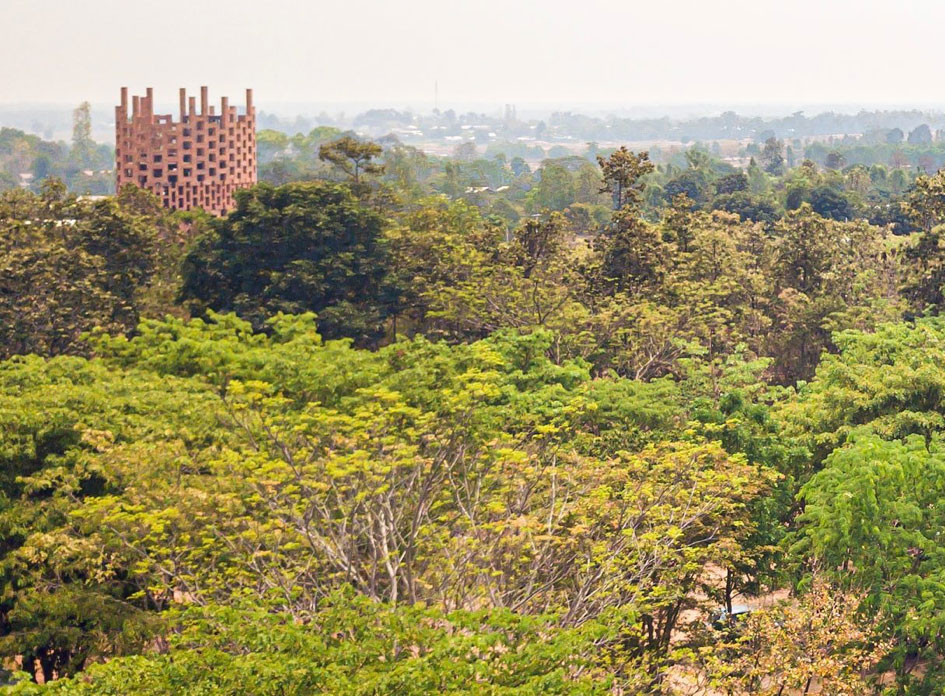
Source: Spaceshift Studio
The Elephant World project is based on a non-human-centered concept. Everything is exclusively made for the animals, as reflected in the size of the area and facilities. The Elephant Courtyard, for example, a recreation ground for the animals, features the rolling landscape of the Northeast, with which pachyderms are familiar. A 5-storey brick tower has exhibits giving an overview of the project. From the tall structure, dipterocarpus seeds are dispatched into the air so that they fall down to germinate and, it is hoped, become a woodland.
Many facilities in the center are made with special bricks taken from various locations. Asst Prof Boonserm is well-known for his innovative bricks made of unique natural materials. He showcased his Elephant Theater, for example, made of elephant dung at the Biennial of Architecture and Landscape of Versailles 2020 in France. His Elephant Dung Towers were featured at the 254th Summer Exhibition of the Royal Academy of Arts 2022 in London.
The center has been built with funds from the government budget or people’s taxes. In turn, it creates job opportunities and income for local people.
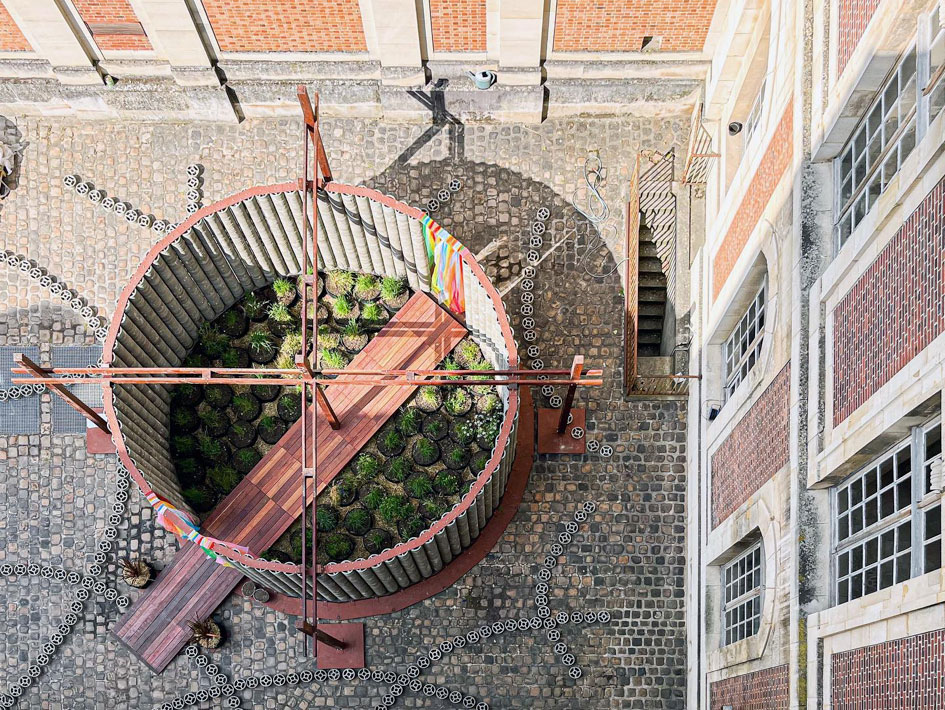
Source: Spaceshift Studio
When the project began in 2020, the world was in the grip of the Covid-19 pandemic. Bringing the animals and their keepers back home to Surin was a key goal. Ban Taklang was designated as a home and a feeding ground where visitors could come and support the livelihood of the animals.
As the project became increasingly well-known, Asst Prof Boonserm has gained international recognition. He has been invited to international conferences where he has elaborated on the principles of non-human-centered design as related to climate change, a major challenge facing the world. He is the first Thai winner of the Royal Academy Dorfman Award 2019 in the United Kingdom. He also won a Silpathorn Award 2019 in the field of architecture. In 2021 he won the Golden Madonnina design prize in the field of Social Impact in Milan, Italy.
“Sustainability has something to do with humanity, nature and culture,” he says. All creatures on earth — humans, animals, plants — are equally important in his view and he wants to keep all in balance. “We humans have to give up and return land that they have occupied for centuries to animals and plants.”
Another goal is to improve rural people’s quality of life. This is a necessity. Otherwise, they will migrate to work in cities and struggle to live in crowded quarters, where they face traffic jams, pollution and social and health problems.
Sustainability also encompasses the cultural environment, which is the core of living with dignity. “In the face of climate change, it is time to communicate with the same language of sustainability to restore the world where we live together,” says Asst Prof Boonserm.
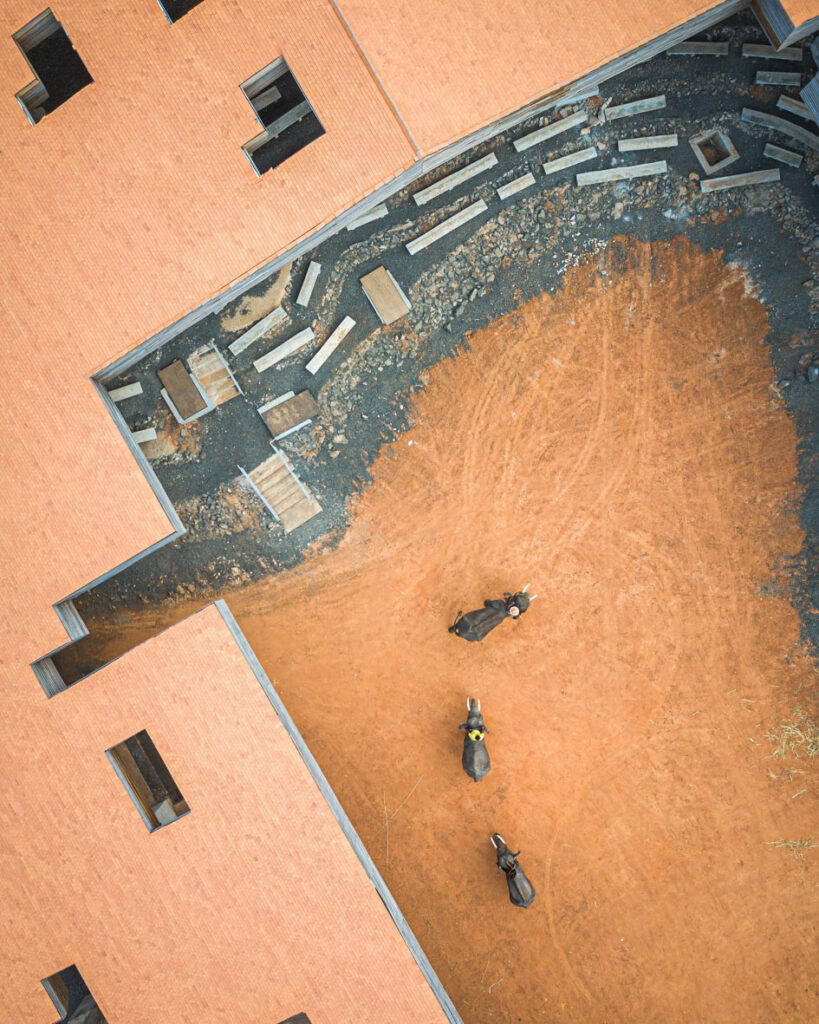
Source: Spaceshift Studio
BY
- Written from a recorded interview with Asst. Prof. Boonserm Premthada and articles from various media
- Faculty of Architecture, Chulalongkorn University
Related articles:
- https://www.facebook.com/people/โลกของช้าง-Elephant-World/100069173230824/
- https://surin.prd.go.th/th/content/category/detail/id/170/iid/67633
- https://becommon.co/life/boonserm-premthada-the-architect/
- https://becommon.co/culture/surin-elephant-world/
- https://www.iameverything.co/contents/boonserm-premthada
- https://citycracker.co/city-design/6-architectures-design-by-boonserm-premtada/
- https://www.designboom.com/architecture/boonserm-premthada-elephant-dung-bricks-thailand-12-31-2021/
- https://www.theguardian.com/artanddesign/2022/jun/15/architects-climate-crisis-royal-academy-summer-exhibition
Others
Winning the Water War with Innovation
Chulalongkorn engineers work with ONWR to better manage risks

